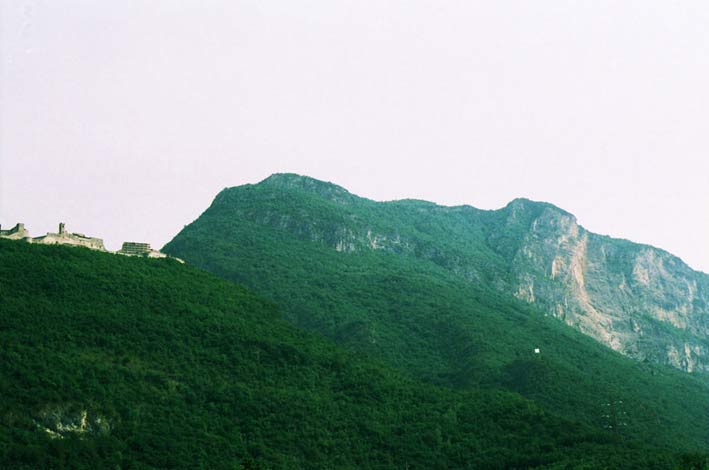
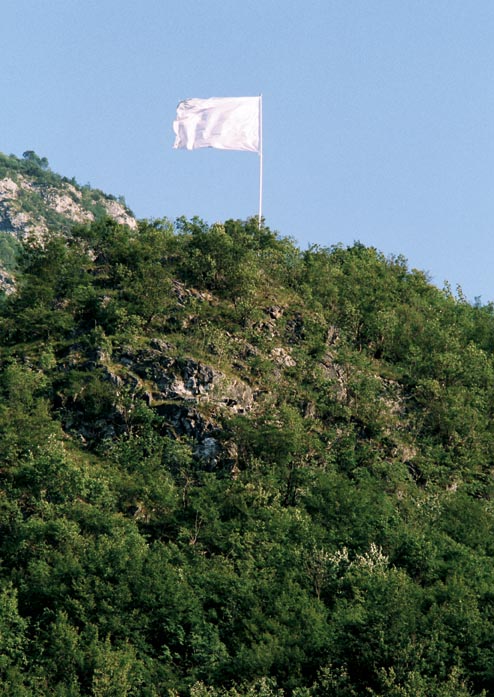
The extreme development, conceptually "THE END" of the project, is White Flag, the hoisting of a flag in various "strategic" points on the earth, in a totalizing act.
The choice of the flag, which
one and where...
has brought somewhat of a conscious dilemma. The solution resides in
the
addition of all the colors: i.e. white, the mourning!
The white flag, white in
which all colors
of the flags of the different nations are at the same time united and
cancelled.
It is the sign against an
absurdly conflicting
society. It is a symbolic act, but at the same time totalizing in its
essential
purity.

WHITE FLAG
BANDIERA BIANCA
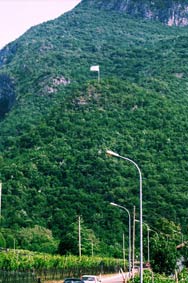
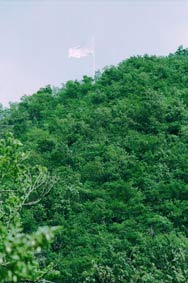
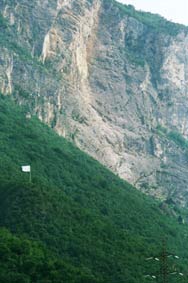
Bandiera Bianca è
un’installazione composta da
un pennone in alluminio di 12 metri e una
bandiera bianca
di
dimensioni 400 x 600
cm
![]() COMUNICATO STAMPA WHITE FLAG, ITA
COMUNICATO STAMPA WHITE FLAG, ITA
![]() COMUNICATO STAMPA PORTOBESENO, ITA
COMUNICATO STAMPA PORTOBESENO, ITA
Il bianco, la sintesi di tutti i colori,
somma e annullamento di tutte le bandiere del mondo.
Una bandiera bianca
è un intervento
silenzioso, ma con un impatto sicuramente forte. La forza è
quella
di raggiungere un pubblico esteso, di far riflettere, di riuscire ad
insinuarsi
nel pensiero comune, in una società così caotica, veloce
e superficiale.
Il bianco… segno di lutto in oriente,
bianco per la purezza… bianco per ri-nascere.
La bandiera bianca
rientra all’interno
della mia ricerca sul tema della bandiera. Punto di partenza sono stati
il video “Stars & Stripes” (Stelle e strisce) e la sua seconda
edizione,
“Lies” (Bugie), presentata nel 2005 da Platform a Londra con testo di
Mami
Kataoka. In quell’opera video il simbolo forte della bandiera americana
era sdoppiato per creare forme e significati in continua evoluzione, da
stendardo a fiore, da minaccioso a rassicurante.
I momenti successivi di questo percorso
sono dominati dal bianco come somma e annullamento di tutte le bandiere
del mondo, perché se i mezzi attuali sono capaci di cancellare i
confini tra le nazioni, ancora rimangono continui contrasti tra gli
stati
e le culture.
La bandiera bianca è stata
protagonista
dell’azione “White-Flags” realizzata all’opening della Biennale di
Venezia
(10 giugno 2005). Mentre a Forte Strino (al passo del Tonale, dove ho
realizzato
la mostra “Atomicwerk”, luglio - settembre 2005) ho sostituito gli
emblemi
nazionali all’esterno di questa struttura bellica austro-ungarica della
Prima Guerra Mondiale: ho tolto le bandiere italiana, europea e
austriaca
issando tre bandiere bianche visibili dalla trafficata strada del passo.
All
artworks and texts published on this web site are for personal use only
and are not for use in the public domain.
All
works and texts are copywritten by Stefano Cagol cannot be reproduced
electronically,
or by any other means without permission of the artist!
Unauthorized
duplication is very very bad karma. Copyright © - 2005 - Stefano
Cagol,
all rights reserved.
http://www.stefanocagol.com